If you have a fish tank, then you know that quality maintenance is key for long-lasting life in it.
The biggest problem for wildlife in an aquarium is low oxygen.
There are several signs of low oxygen in the aquarium and we will describe them for you to notice it on time and save your aquarium wildlife.


Oxygen In Fish Tank
There can be several signs of low oxygen in the aquarium, but you need to notice them carefully. Since there is no red light that indicates a lack of oxygen in a fish tank, many don’t notice the bad condition of the water. First, you need to be aware of why is oxygen important for fish and then how to notice the lack of it.
Why Is Oxygen Important In Fish Tank
As humans breathe and use oxygen from the air, fish need it to breathe underwater, too. Oxygen is dissolved in the water and fish use it to breathe and stay alive. Moreover, it is crucial for plants and their development. Also, it helps the growth of good bacteria that maintain life in the tank. Since it is very important, special care must be taken to satisfy the need for fish and plants. Without oxygen, it is impossible to keep any live creature or plant in it. So, having rich wildlife in a fish tank isn’t that easy and requires more than just a tank and water and knowing how many goldfish in a 20-gallon tank.
Optimal Level Of Oxygen In Fish Tank
The optimal level of oxygen in a fish tank depends on its size, temperature of water and type of fish that you will have in it. If you keep tropical fish, it is important to check salinity, too. The level of oxygen is measured in milligrams per litre. For a freshwater tank at a temperature of 20°C, it is necessary to have 9 mg/l of oxygen. As much salinity is growing, less oxygen is needed. Usually, there is a table with measures that every fish tank provider will inform you about and teach you how to measure it. Also, there are modern instruments that measure the level of oxygen in the water and display it quickly. But, some laws never change. As water temperature increases, the amount of dissolved oxygen decreases. Also, it depends on air pressure and the lower the pressure, the less oxygen it takes.
Reasons For Low Dissolved Oxygen In Tank
There are many reasons why there might be a lack of oxygen in the aquarium. First, you need to be sure and learn how to clean algae from the fish tank because an overstocked tank, which means it has more waste and unnecessary algae, has less oxygen and spends more on growing bacteria. Live plants use a lot of oxygen and turn it into carbon dioxide. Also, the remains of food and other pollution in the water use oxygen needed for fish. Oxygen needs a long lightning period, which means you need to ensure adequate lightning or lamps inside because fish spend more oxygen during the nighttime. If your filters aren’t working properly, they might cause problems with gas changing and lack of oxygen. What is more, if you use strong chemicals for cleaning the fish tank, it may also be a reason for worry and not enough oxygen in a fish tank.
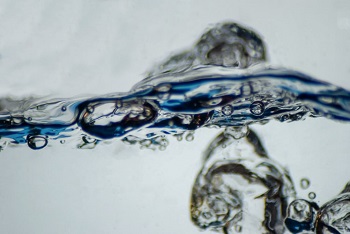

4 Signs Of Low Oxygen In Aquarium
There are several signs of low oxygen in a fish tank. We will describe most of them and you just need to track your fish tank and recognize it on time to avoid serious damage and consequences. All of the signs are usually only visible on the fish, but if you use instruments and compare the results with the table of measures, you may notice the lack of oxygen in a fish tank. Be sure to regularly check all parameters, like temperature, to react on time.
Fish Being Inactive
Movement on the surface is crucial for oxygen to dissolve in the water successfully. Water on the surface always has more oxygen, but if it is stagnant for a longer period, lower parts won’t dissolve it successfully. It is important to ensure successful water circulation if fish won’t move it naturally. If you notice that your fish aren’t swimming vividly and stay on the spot, it may be a reason for worrying. Be sure that you know which species you have and what their characteristics are. Some species are naturally more inactive, but if you had vivid species and now they stay in place, it is usually a problem with oxygen. Also, it is often connected with eating less food and avoiding any contact with others in the fish tank. Be sure that you regularly monitor the behaviour and notice if only one fish is behaving in that way or is it a mutual problem.
Fish Breathing Heavily
If you examine and look at your fish closely, you may notice that one symptom is heavy breathing. The rapid grill movement usually means that fish have problems with breathing or getting enough air. Be sure that the fish you examine is slightly inactive or near the glass to see well. Also, be sure that more fish has rapid grill movement and not only one that might be sick. In the end, this should appear regularly to be the clear sign of not enough oxygen in a fish tank.
Fish Gasping On The Surface
One sign should worry you the most. It is when fish are swimming near the surface and gasping for air. Fish aren’t supposed to take oxygen from the air and they use gills for breathing. At this stage, they usually have their mouth wide open and it is a moment for instant action. In the worst scenario, they will start to die within 48 hours of the first sign. At this stage, it is necessary to change more than 50% of water and add water rich in oxygen. This is usually the last stage and it is easy to notice when all of the fish is swimming near the surface.
Too Many Plants
A very visible sign is when the fish tank is loaded with plants. Water plants, no matter freshwater or from salty water, tend to grow and use space. For its growth, they use a lot of oxygen from the water and fill most of the space. You should regularly trim plants and maintain a fresh and cared for look. If you stop with it, it can cause a lower level of oxygen in the water and more problems for fish inside.
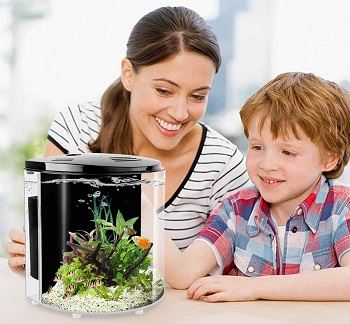

How To Increase Oxygen In The Fish Tank
Not enough oxygen in the fish tank may cause many problems, like inactive fish and can even lead to death. There are usually three stages and you can notice it from the fish’s behaviour, but the most important is to react properly. We bring you useful advice on what to do to increase the level of oxygen in the aquarium.
First, avoid overcrowding and be sure that you have fewer fish in the tank than recommended. The same goes for plants and accessories. Always be sure to have extra space for fish to move and enjoy separately. Then, keep the temperature low and use instruments for measuring. Be sure that you clean the tank regularly, but don’t use aggressive chemicals.
To increase oxygen level, you may use some helping tools or instruments. For example, it is helpful to use the air pump. It is controlled and increases the desired amount of oxygen in different tank types. Also, it produces bubbles and mixes water to allow even distribution on all levels. You can replace it with air stone, which is a smart and invisible tool that makes little bubbles that look natural, from the stone bottom. Also, it mixes water for even air distribution.
You can add the right plants and bacteria in the tank and decrease the number of fish. It is crucial that you are educated about fish needs and how much space they need. What is more, there are many devices for beginners and sellers that can give you some useful advice. Be sure that you are interested in the well-being of your fish.
To Sum Up
For owning a healthy fish tank you need to know much information, like can two female betta fish live together. Yet, it is very important to notice signs of low oxygen in the aquarium. It is mostly connected with fish behaviour, but the sign can be an overcrowded tank with plants. Be sure that you notice the lack of oxygen in a fish tank and act immediately to avoid serious consequences. If you need a new aquarium for your home or office, find the right one in the posts on the best home saltwater fish tanks or the best-rated amazing aquariums
.





















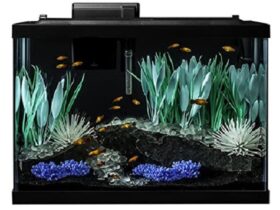
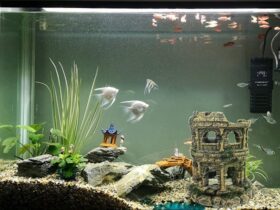
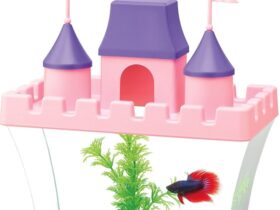
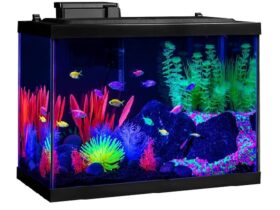
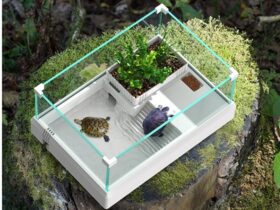
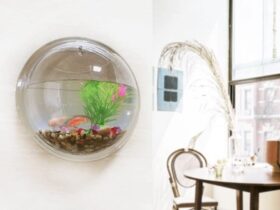
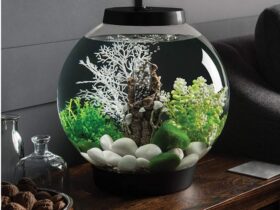
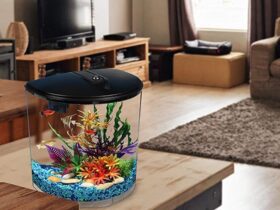
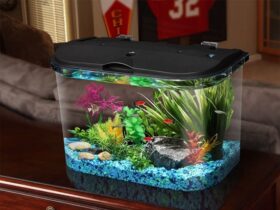
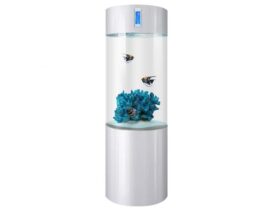
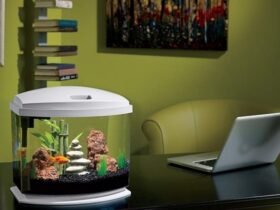
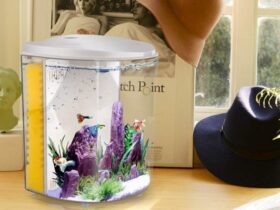
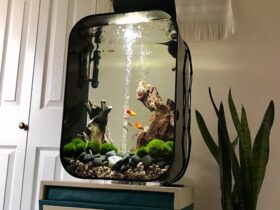

Leave a Reply